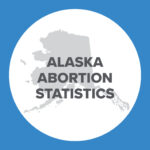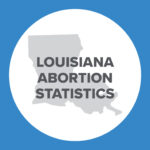Abortion Pill Reversal: A Record of Safety and Efficacy

This is Issue 4 of the On Science series.
Introduction
Chemical abortions have been increasing over recent years to now account for 44 percent of reported abortions in the United States in 2019.[1] These percentages have grown consistently from 6% in 2001 and will likely rise even faster as abortion providers pressure the Food and Drug Administration (FDA) and lawmakers to allow them to sell chemical abortions to women online, without a single, in-person visit to a doctor to verify the gestational age or location of the baby.[2]
With this rise, there has also been a growing number of women who change their mind after taking the first pill in the abortion drug regimen. These women, who no longer want to continue in their abortion, represent the increased interest in the concept of abortion pill reversal (APR) as a potential antidote to chemical abortion.
Here we will analyze the science surrounding APR, the claim of the protocol’s efficacy, and concerns regarding the potential side-effects of administration of progesterone. First, we will start by providing an overview of the chemical abortion process.
Chemical Abortion Process
Chemical abortion, also known as the “abortion pill regimen,” “medication abortion,” or “medical abortion,” is a two-drug regimen that is taken up to 70 days (10 weeks), or even longer,[3] into a pregnancy with the intention of causing an abortion, the death of an unborn child.[4] [5] , The first drug a woman takes is mifepristone, which blocks progesterone’s actions by binding to progesterone receptors in the ovaries, uterus and the placenta. Progesterone is a naturally occurring hormone in a woman’s body that is necessary to nurture and sustain a pregnancy. Blocking this hormone essentially starves the baby of nutrients. Then, 24 to 72 hours after mifepristone is taken, the second drug, usually misoprostol, is taken to induce labor, causing the uterus to contract and expel the deceased baby. This commonly occurs at home, outside of any clinical setting.
Abortion Pill Reversal Protocol
However, before taking the second drug, a woman might change her mind about continuing the chemical abortion. The Abortion Pill Reversal protocol is started within 72 hours after taking the first abortion drug, mifepristone, and before the second drug, misoprostol, is taken. The medical provider will prescribe bioidentical progesterone to outnumber and outcompete the mifepristone in order to reverse the effects of the mifepristone. An ultrasound is performed as soon as possible to confirm heart rate, placement, and dating of the pregnancy. The progesterone treatment will usually continue through the first trimester of pregnancy in an attempt to reverse the effects of the mifepristone.
Progesterone Use in Pregnancy
Bioidentical progesterone has been used to support healthy pregnancies since the 1950s,[6] receiving FDA approval in 1998.[7] Today, progesterone treatment is commonly used to reduce the risk of premature birth[8] and recurring miscarriage.[9] In addition, progesterone supplementation is an expected part of the management of IVF pregnancies after embryo transfer and has an extensive safety record.[10]
In early pregnancy, a woman’s body produces extra progesterone to allow the mother’s womb to be able to nourish the baby as well as to prevent uterine contractions which lead to miscarriage. In later pregnancy, progesterone also prepares a woman’s breasts to produce milk for her soon-to-be newborn. It also makes her lungs capable of delivering more oxygen to her unborn baby.[11] In short, progesterone is vital to pregnancy.
Two studies published in 2020 in the American Journal of Obstetrics and Gynecology determined that progesterone is a potential treatment for women whose previous miscarriage or bleeding was the result of low progesterone.
The first study, which looked at more than 800 women in 45 hospitals in the United Kingdom and the Netherlands, found progesterone treatment led to a 3% greater live birth rate among those treated than those who were not. This study is known as the PROMISE study.[12] The second study, known as the PRISM study, followed over 4,000 women and produced similar results.[13] Both trials reported that improvement was higher among those who had more miscarriages. The PRISM study even showed a 15% benefit among women with three or more miscarriages and current pregnancy bleeding.
Supporting Research
Animal Research
In 1989, a notable animal study was done using pregnant rats to observe “[t]he effect of RU486 and progesterone on luteal function during pregnancy.”[14] In order to do this, the researchers used three groups of rats. The first group was given no drugs, the second received mifepristone, and the third received mifepristone and then bioidentical progesterone. The study found that “100% of the no-drug group delivered live offspring. Only 33.3% of the mifepristone-only group delivered live offspring. In the mifepristone and then progesterone group, 100% delivered live offspring.”[15]
Nearly three decades later, further research would demonstrate comparable success with the use of mifepristone and progesterone in human pregnancies.
Case Studies
In 2018, physician George Delgado (one of the two pioneers of the APR protocol) had a peer-reviewed study published in the medical journal, Issues in Law and Medicine.[16] The study followed 754 women who all wanted to stop their in-progress chemical abortions. Working with obstetrician-gynecologist Dr. Mary Davenport and five other scholars, Delgado demonstrated that when administered within 72 hours of taking mifepristone, the APR protocol has a 64-68% success rate in saving unborn babies.
Notably, the study also found zero increased risk of birth defects or preterm births. Indeed, as referenced in Practice Bulletin 225 from the American College of Obstetricians and Gynecologists (ACOG), mifepristone itself has not been shown to cause birth defects.[17]
Delgado’s 2018 study was the first publicly available documentation on the protocol in the U.S. since 2012, when Delgado and Davenport published an article following seven women’s progress in Annals of Pharmacotherapy.[18]
With that limited sample size, Delgado and Davenport showed a 66% success rate when the protocol was applied within 72 hours of a woman taking mifepristone. This is consistent with a 2017 study[19] published in The European Journal of Contraception and Reproductive Health Care that followed three women using progesterone to counteract the effects of mifepristone. In this study, two out of three women had successful reversals. The conclusion of the study states: “Progesterone use in early pregnancy is low risk and its application to counter the effects of mifepristone in such circumstances may be clinically beneficial in preserving her threatened pregnancy.”
ACOG Practice Bulletin 225
Further evidence pointing to the efficacy of APR is found in the ACOG Practice Bulletin 225, published October of 2020.[20] The bulletin details ACOG’s guidance on the provision of “medication abortion.” While they do claim in the bulletin, “There is no evidence that treatment with progesterone after taking mifepristone increases the likelihood of the pregnancy continuing,” they go on to warn abortion providers to avoid administering depot medroxyprogesterone acetate (DMPA), a progestin-only birth control, on the same day that mifepristone is administered. ACOG states that doing so reduces the efficacy of the chemical abortion and increases the chances of embryonic and fetal survival by 4 times (0.9% vs 3.6%),[21] even after the woman has taken the second drug, misoprostol. “Patients who select depot medroxyprogesterone acetate (DMPA) for contraception should be counseled that administration of DMPA on day 1 of the medication abortion regimen may increase the risk of ongoing pregnancy.”
The progestin provided in DMPA is notably less effective than natural progesterone and given at a much lower dose as compared to the bioidentical progesterone provided in the APR protocol, but still has a significant impact on fetal survival.
Mitchell Creinin, a known critic of abortion pill reversal, was one of the authors of this bulletin. In 2019, Creinin published results of a randomized controlled trial of mifepristone alone vs. mifepristone and then natural progesterone. The results of the 2019 study (which was eventually cut short) demonstrated the success of Abortion Pill Reversal. Among the patients who received progesterone, 80% were able to achieve an ongoing pregnancy. This is compared to only 40% of the women who received the placebo. In the progesterone group, four out of the five women had “gestational cardiac activity” (a fetal heartbeat) at follow-up.[22]
Current Usage of Abortion Pill Reversal (APR)
Since the protocol was first used by physicians George Delgado (in 2009) and Matthew Harrison (in 2007), statistics now show more than 2,500 babies have been saved following use of the APR protocol.[23]
Generally, APR is provided through the Abortion Pill Rescue Network, a global association of more than 1,000 volunteer medical providers and pregnancy help organizations. The Abortion Pill Rescue Network, which is operated by Heartbeat International, helps over 100 women per month to initiate the APR process.
Legislative Efforts to Promote APR
With the growing number of successful reversals through the APR protocol, legislators both federally and locally have shown increased interest in ensuring women who choose to begin the chemical abortion process are aware of the possibility of reversing their abortion. Primarily this is being accomplished through informed consent laws. These require medical professionals who provide the abortion pill regimen to also inform the woman, either in writing or orally, that she could possibly reverse her abortion if she should change her mind. Fourteen states have passed such legislation into law, and 10 of those laws are currently in effect.[24]
There have also been congressional efforts to advance the legislation titled the “Second Chance at Life Act.” It was introduced in the 116th and 117th Congress and each time received over 60 co-sponsors.[25]
Conflicting Research
The Creinin Study
In the 2019 paper referred to above, a study aiming to disprove the efficacy of abortion pill reversal was conducted by Mitchell Creinin and four other individuals, all who have been or currently are abortion providers. Dr. Creinin is an abortion provider who is and has been a paid consultant with Danco Laboratories,[26] which manufactures the abortion pill mifepristone.
His study was intended to involve 40 women who were seeking chemical abortions. They were to be given the first pill of the chemical abortion regimen, mifepristone, and then randomly selected to receive either progesterone or a placebo. Women in the study whose pregnancies progressed were to be offered a subsequent option of a surgical abortion.[27] In the end, the study only included 10 women, five of whom underwent the APR protocol and five who received the placebo.
The study was cut short when three women experienced bleeding complications and visited the ER. In the group which did not receive progesterone, two of the five women (40%) required emergency D&Cs and one also required a transfusion. The third woman who bled heavily was part of the progesterone group. Her bleeding stopped on its own and she did not require any treatment or surgery.
There are many possible complications listed by medical authorities that are associated with chemical abortion.[28] These include an incomplete abortion, potentially resulting in the need for a follow-up surgical abortion,[29] heavy and prolonged bleeding, infection, fever and digestive system discomfort, according to the Mayo Clinic.[30]
The previously referenced 2020 Practice Bulletin 225 from ACOG, developed in collaboration with abortion providers Dr. Creinin and Dr. Daniel Grossman, states that, “limited available evidence suggests that use of mifepristone alone without subsequent administration of misoprostol may be associated with an increased risk of hemorrhage.”[31] However, this speculative conclusion is refuted by the 2021 publication of the analysis of adverse event reports submitted to the FDA.[32] In this study of over 3,197 adverse events, “Hemorrhage occurred more often in those who took mifepristone and misoprostol (51.44%) than in those who took mifepristone alone (22.41%).”[33] This evidence clearly refutes the speculation that somehow taking mifepristone without misoprostol is more likely to result in hemorrhage than taking mifepristone alone. In fact, the 2019 Creinin study of mifepristone followed by misoprostol demonstrated that progesterone had a protective effect against hemorrhage.
Conclusion
Multiple studies throughout the world continuously produce positive results regarding the use of progesterone in pregnant women. Progesterone has been shown to help reduce the risk of miscarriages and lower the rates of preterm birth. APR is a cutting-edge application of this time-tested, FDA-approved treatment used for decades to provide women who regret taking the first abortion pill with a chance to reverse the effects and ultimately save their pregnancies.
[1] Tessa Longbons, “U.S. Abortion Trends: 2019 and Preliminary 2020,” The American Report Series 19, Charlotte Lozier Institute (Sep. 10, 2021), https://lozierinstitute.org/wp-content/uploads/2021/09/American-Report-Series_19.pdf.
[2] Michael J. New, “Ignoring the Science: House Democrats Push for Dangerous Mail-Order Abortion,” CBN News (Sep. 17, 2021), https://www1.cbn.com/cbnnews/us/2021/september/ignoring-the-science-house-democrats-push-for-dangerous-mail-order-abortion.
[3] “The Abortion Pill,” Planned Parenthood, Planned Parenthood Federation of America, https://www.plannedparenthood.org/learn/abortion/the-abortion-pill.
[4] “Mifeprex (mifepristone) Information,” U.S. Food & Drug Administration (Apr. 13, 2021), https://www.fda.gov/drugs/postmarket-drug-safety-information-patients-and-providers/mifeprex-mifepristone-information.
[5] “Questions and Answers on Mifeprex,” U.S. Food & Drug Administration (Apr. 13, 2021), https://www.fda.gov/drugs/postmarket-drug-safety-information-patients-and-providers/questions-and-answers-mifeprex.
[6] Gian Carlo Di Renzo et al., “Progesterone: History, facts, and artifacts,” Best Practice & Research Clinical Obstetrics and Gynaecology 69 (Nov. 2020), https://doi.org/10.1016/j.bpobgyn.2020.07.012.
[7] “Drug Approval Package,” Prometrium (Progesterone) Capsules, Application No. 020843, U.S. Food & Drug Administration (approved Dec. 26, 1998), https://www.accessdata.fda.gov/drugsatfda_docs/nda/98/020843_s000_PrometriumTOC.cfm.
[8] Line Rode et al., “Systematic review of progesterone for the prevention of preterm birth in singleton pregnancies,” Acta Obstetricia et Gynecologica Scandinavica 88 (2009), doi:10.3109/00016340903280982.
[9] Lisa Jaffe, “Progesterone Helps Prevent Reoccurring Miscarriage,” EndocrineWeb, Remedy Health Media (updated Mar. 10, 2020), https://www.endocrineweb.com/conditions/reproduction/progesterone-therapy-found-help-prevent-reoccurring-miscarriage.
[10] “Fact Sheet: Progesterone supplementation during IVF,” ReproductiveFacts.org, American Society for Reproductive Medicine (revised 2016), https://www.reproductivefacts.org/globalassets/rf/news-and-publications/bookletsfact-sheets/english-fact-sheets-and-info-booklets/progesterone_supplementation_during_ivf_factsheet.pdf; Practice Committee of the American Society for Reproductive Medicine, “Progesterone supplementation during the luteal phase and in early pregnancy in the treatment of infertility: an educational bulletin,” Fertility and Sterility 89, American Society for Reproductive Medicine (Apr. 2008) doi:10.1016/j.fertnstert.2008.02.012 C.
[11] “Progesterone treatment to help prevent premature birth,” March of Dimes (reviewed Dec. 2020), https://www.marchofdimes.org/complications/progesterone-treatment-to-help-prevent-premature-birth.aspx.
[12] Arri Coomarasamy et al., “PROMISE: first-trimester progesterone therapy in women with a history of unexplained recurrent miscarriages – a randomised, double-blind, placebo-controlled, international multicentre trial and economic evaluation,” Health Technology Assessment 20 (May 2016), doi: 10.3310/hta20410.
[13] Arri Coomarasamy, “Progesterone to prevent miscarriage in women with early pregnancy bleeding: the PRISM RCT,” Health Technology Assessment 24 (June 2020), doi: 10.3310/hta24330.
[14] S. Yamabe, “The effect of RU486 and progesterone on luteal function during pregnancy,” Nihon Naibunpi Gakkai Zasshi 65 (May 1989), doi: 10.1507/endocrine1927.65.5_497.
[15] Practice Bulletin Committee, “The Reversal of the Effects of Mifepristone by Progesterone,” Practice Bulletin 6, American Association of Pro-life Obstetricians & Gynecologists (Nov. 2019), https://aaplog.org/wp-content/uploads/2020/01/FINAL-PB-6-Abortion-Pill-Reversal-1.pdf.
[16] George Delgado et al., “A case series detailing the successful reversal of the effects of mifepristone using progesterone,” Issues in Law & Medicine 33 (Spring 2018), https://pubmed.ncbi.nlm.nih.gov/30831017/.
[17] Committee on Practice Bulletins—Gynecology and the Society of Family Planning et al., “Medication Abortion Up to 70 Days of Gestation,” Practice Bulletin 225, American College of Obstetricians and Gynecologists (Oct. 2020), https://www.acog.org/clinical/clinical-guidance/practice-bulletin/articles/2020/10/medication-abortion-up-to-70-days-of-gestation.
[18] George Delgado and Mary L. Davenport, “Progesterone Use to Reverse the Effects of Mifepristone,” Annals of Pharmacotherapy 46 (Nov. 2012), https://doi.org/10.1345%2Faph.1R252.
[19] Deborah Garratt and Joseph V. Turner, “Progesterone for preventing pregnancy termination after initiation of medical abortion with mifepristone,” The European Journal of Contraception & Reproductive Health Care 22 (Dec. 2017), doi: 10.1080/13625187.2017.1412424.
[20] Committee on Practice Bulletins et al., “Medication Abortion Up to 70 Days of Gestation.”
[21] Elizabeth G. Raymond et al., “Effects of Depot Medroxyprogesterone Acetate Injection Timing on Medical Abortion Efficacy and Repeat Pregnancy: A Randomized Control Trial,” Obstetrics and Gynecology 128 (Oct. 2016), doi: 10.1097/AOG.0000000000001627.
[22] Mitchell D. Creinin et al., “Mifepristone Antagonization With Progesterone to Prevent Medical Abortion: A Randomized Controlled Trial,” Obstetrics and Gynecology 135 (Jan. 2020), doi: 10.1097/AOG.0000000000003620.
[23] “Abortion Pill Reversal: What is the Abortion Pill Reversal Process?” Abortion Pill Rescue Network, https://aprnworldwide.com/abortion-pill-reversal.
[24] “Abortion Pill Reversal Factsheet,” National Right to Life (July 7, 2021), https://www.nrlc.org/uploads/stateleg/AbortionPillReversalFactSheet.pdf.
[25] Second Chance at Life Act of 2019, H.R. 2010, 116th Cong. (2019), https://www.congress.gov/bill/116th-congress/house-bill/2010/cosponsors?q=%7B%22search%22%3A%5B%22mifepristone%22%5D%7D&r=3&s=3; Second Chance at Life Act of 2021, H.R. 552, 117th Cong, (2021), https://www.congress.gov/bill/117th-congress/house-bill/552/cosponsors?r=5&s=1.
[26] Creinin et al., “Mifepristone Antagonization With Progesterone to Prevent Medical Abortion.”
[27] University of California, Davis, “Blocking Mifepristone Action With Progesterone,” Identifier NCT03774745 (Feb. 2019 – Aug. 2019), https://clinicaltrials.gov/ct2/show/study/NCT03774745.
[28] Kathi Aultman et al., “Deaths and Severe Adverse Events after the use of Mifepristone as an Abortifacient from September 2000 to February 2019,” Issues in Law & Medicine 36 (Spring 2021), https://pubmed.ncbi.nlm.nih.gov/33939340/.
[29] Maarit Niinimäki et al., “Immediate complications after medical compared with surgical termination of pregnancy,” Obstetrics and Gynecology 114 (Oct. 2009), doi: 10.1097/AOG.0b013e3181b5ccf9.
[30] Mayo Clinic Staff, “Medical abortion,” Mayo Clinic, Mayo Foundation for Medical Education and Research (May 14, 2020), https://www.mayoclinic.org/tests-procedures/medical-abortion/about/pac-20394687/
[31] Committee on Practice Bulletins et al., “Medication Abortion Up to 70 Days of Gestation.”
[32] Aultman et al., “Deaths and Severe Adverse Events after the use of Mifepristone.”
[33] Ibid.


























